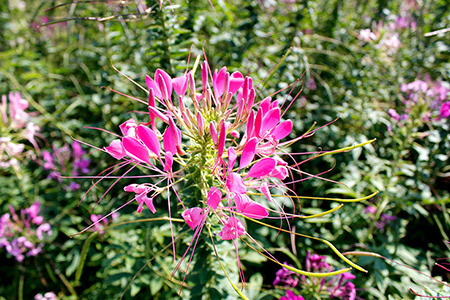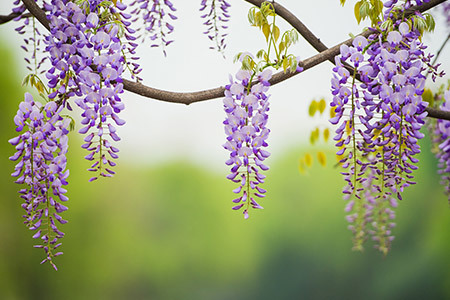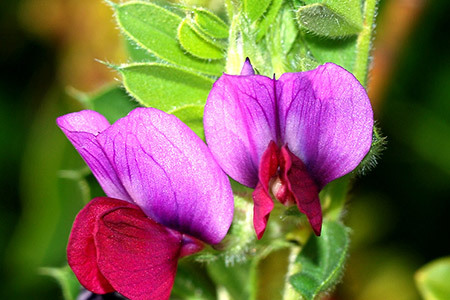Arrowhead Pea
The arrow pea (Vicia sativa L.) is a cultivated species of the wild pea genus (Vicia) in the legume family (Leguminosae). It has slender, soft stems that are angled or climbing, with ridges, and is highly branched, growing 60-200 cm long. The leaves are pinnate with 8-16 leaflets; flowers are 1-3 in number, purple or red. The pods are linear, and the seeds are spherical or slightly flattened, with a weight of 18-21 grams per thousand seeds.
Classification:
Forage and green manure seeds
Telephone:
Product Description
1. Botanical Characteristics
Arrow pea (Vicia sativa L.) is a cultivated species of the wild pea genus (Vicia) in the legume family (Legumimosae). The stem is slender and soft, inclined or climbing, with ridges, and often branched, growing 60-200 cm long. The compound leaves are pinnate, with 8-16 leaflets; flowers are 1-3, purple or red. The pods are linear, and the seeds are spherical or slightly flattened, with a weight of 18-21g per thousand seeds.
2. Biological Characteristics
Arrow pea prefers cool climates and has strong cold resistance, showing a wide adaptability. It begins to germinate at temperatures of 2°C-3°C, and seedlings can tolerate spring cold down to -6°C, with the lowest survival temperature being -12°C. It has strong drought resistance and can survive in very dry soil. Arrow pea is not strict about soil requirements and can grow in general soil. It is more tolerant of thin soil than ordinary peas and can grow in wasteland, making it a good pioneer crop. The growth period of different varieties of arrow pea varies under different natural conditions; in Liangshan Prefecture, the growth period is about 100-120 days; spring sowing has a shorter growth period, while autumn sowing has a longer growth period. The growth is slow during the seedling stage but accelerates rapidly once budding begins. Its growth rate is positively correlated with temperature before flowering, and after flowering, it is related to the characteristics of the variety.
3. Key Cultivation Techniques
1. Preparation Before Sowing
Fine tillage, applying 1500 kg of organic fertilizer and 10-15 kg of superphosphate as base fertilizer per mu.
2. Fertilization
The soil and fertilizer requirements are not strict; when conditions permit, appropriate application of some phosphate fertilizer as base fertilizer is recommended.
3. Sowing
(1) Sowing Period: In northern regions, sowing can be done from spring to autumn (no later than early August). Generally, sowing in early April is better for seed collection; summer sowing should be done as early as possible, especially in areas with lower temperatures (average temperature in October below 7°C). Early sowing is key to achieving high yields. In southern regions, sowing can be done year-round; for seed collection, autumn sowing should not be later than October, and spring sowing should not be later than February.
(2) Sowing Amount: For forage land, use 4-6 kg of seeds per mu; for seed land, use 1-4 kg. It can also be mixed with grass species, with a mixing ratio of 2:1 or 3:1.
(3) Sowing Method: For grassland, row sowing is recommended with a row spacing of 30-45 cm; for seed collection land, row sowing with a row spacing of 60 cm; large area broadcasting.
(4) Sowing Depth: Arrow pea has large seeds, and the sowing depth is generally 4-6 cm, followed by compaction.
4. Field Management
Management after arrow pea emergence is simple. In northern irrigated areas, it is important to ensure water supply during the peak branching and pod-setting periods, as soil moisture significantly affects seed yield. In southern rainy seasons, drainage should be prioritized.
5. Harvesting Fresh Grass and Seeds: Fresh grass should be cut during the budding or early flowering stage, as its nutritional value is best at this time. Arrow pea seeds are prone to pod shattering when mature; harvesting can be done in the morning when 70% of the pods turn yellow-brown.
4. Forage Value
It has been determined that arrow pea hay contains 16.14% crude protein, 3.32% crude fat, 25.17% crude fiber, 42.29% nitrogen-free extract, 2.0% calcium, and 0.25% phosphorus. The seeds contain up to 30.35% crude protein, making it a dual-purpose crop for feed and forage. It grows vigorously and has high yields. Generally, it produces 1000-2000 kg of fresh grass per hectare, with high yields reaching up to 3000 kg, and seed yields of 100-150 kg per hectare, with high yields exceeding 250 kg. The drying rate of fresh grass is 22%, with leaf content at 51.3%. The stems and leaves are tender, nutritious, and palatable, making it favored by horses, cattle, sheep, pigs, goats, and poultry. Mixing arrow pea with green oats for harvesting mixed green hay increases yield by 43.3% compared to monoculture of green oats, and the protein content of mixed green hay is 4.0% higher than that of green oats. This is an effective way to increase the storage of dry hay in winter and spring, improve hay quality, and enhance the nutritional level of livestock during winter and spring, and it can be widely promoted in areas where green oats are grown.
Key words:
Immediate consultation
If you are interested in our products, please leave your email, we will contact you as soon as possible, thank you!
Product recommend
RELATED INFORMATION
02
/
12
News dynamics
01
/
30
News dynamics
07
/
17
News dynamics
04
/
18
News dynamics
01
/
19
News dynamics
Urban greening is an important component of urban construction.







